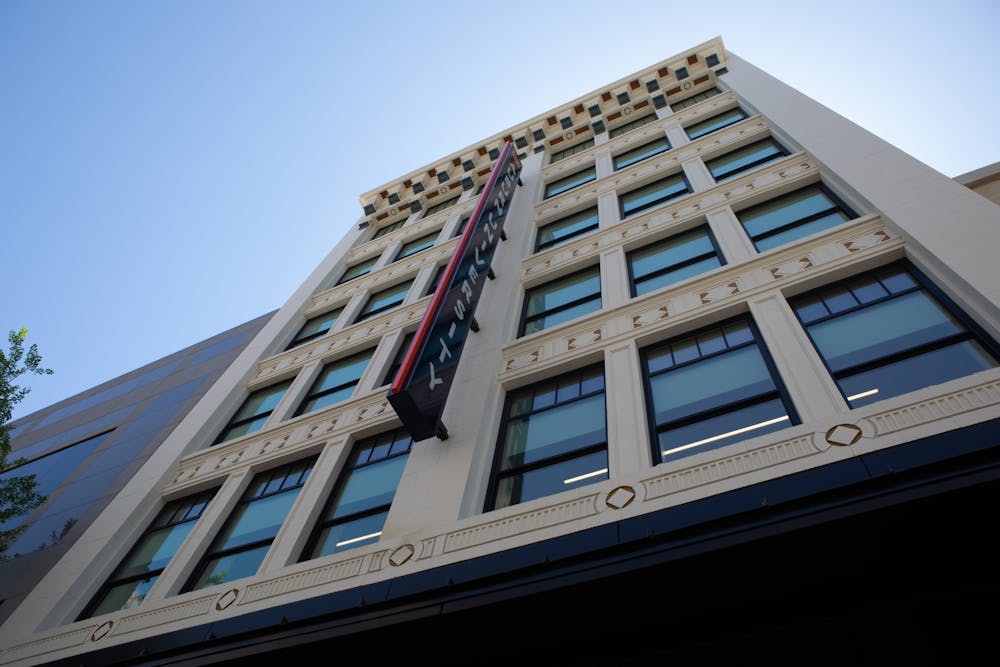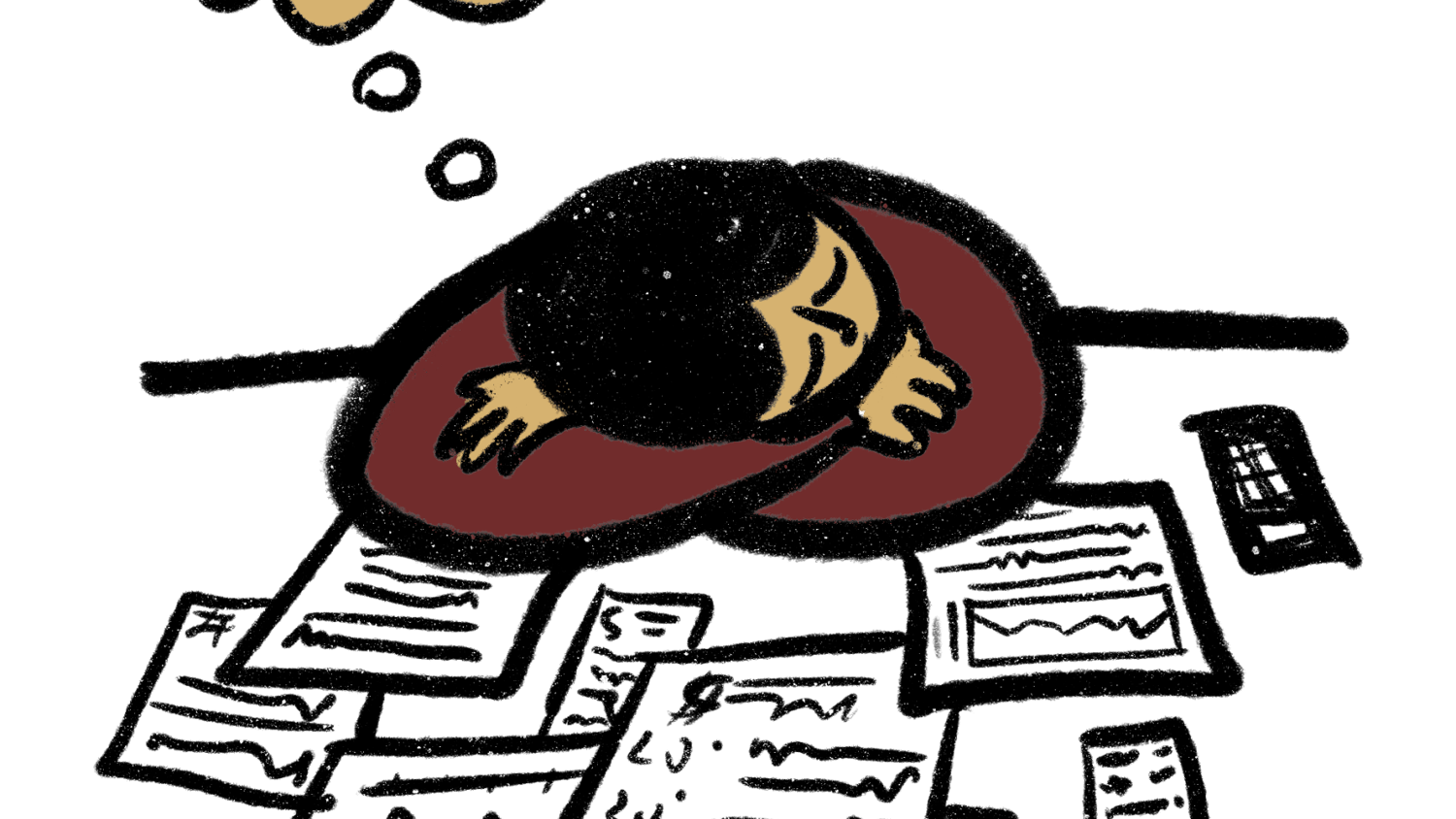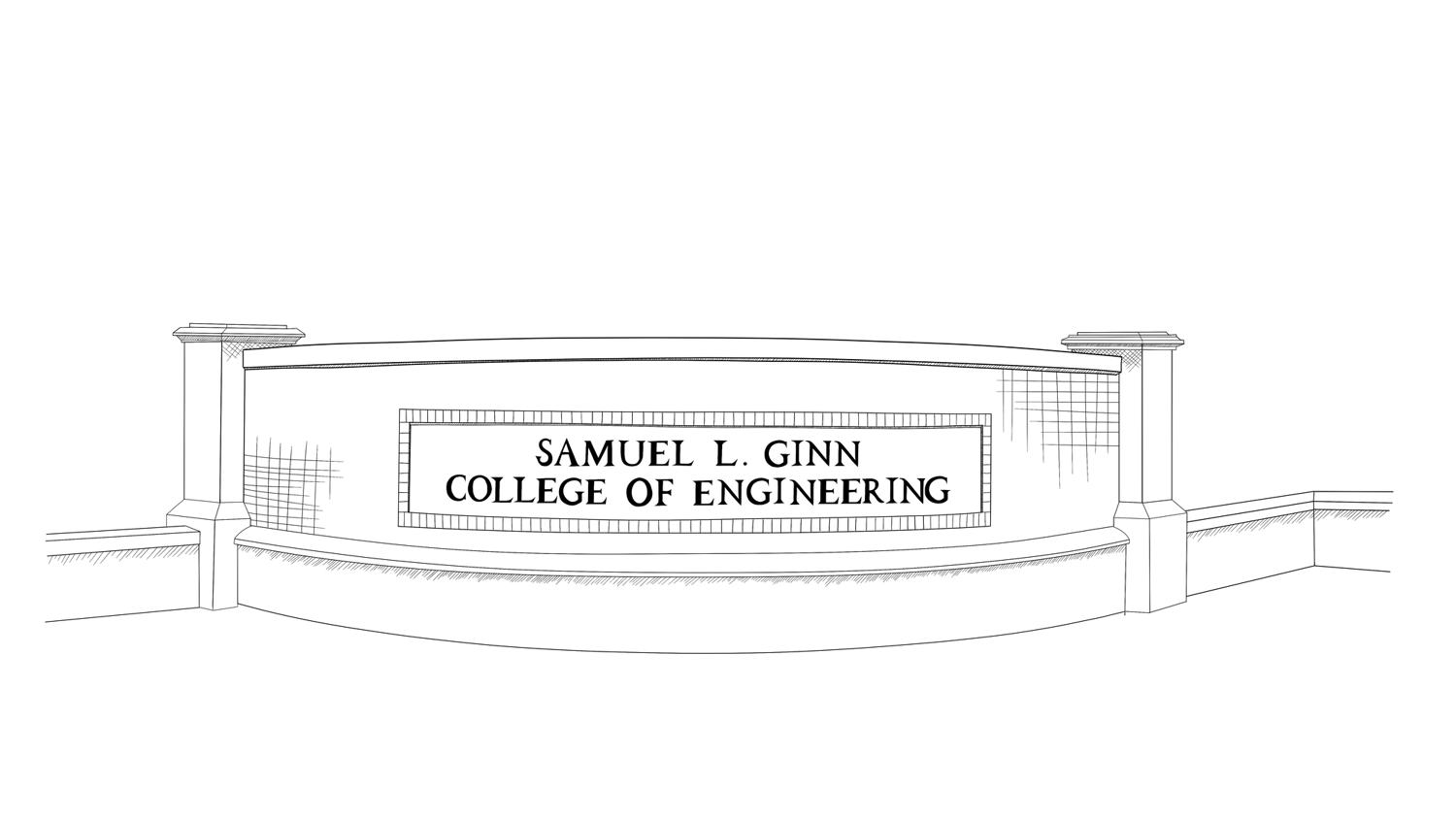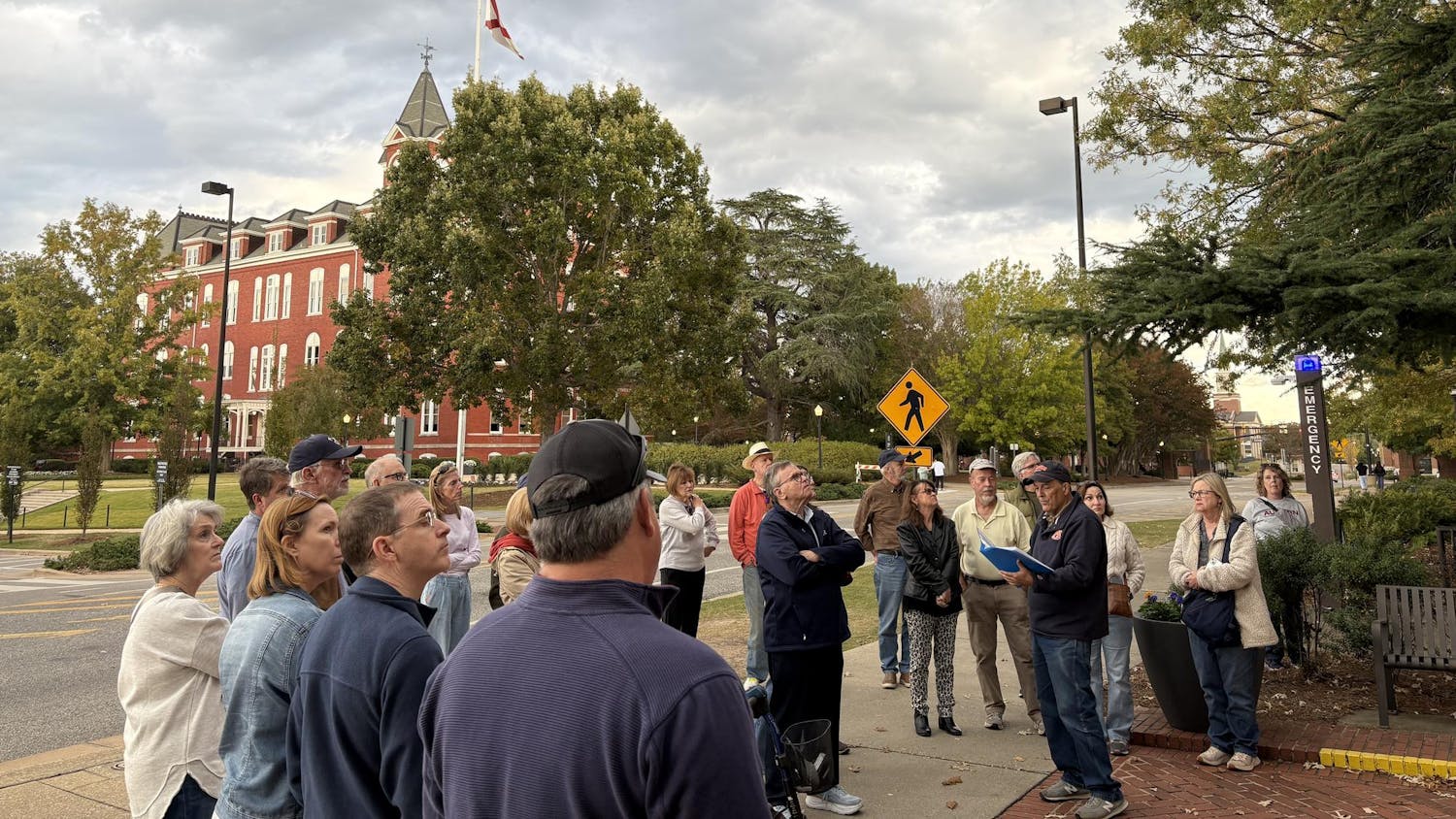Formerly a vacant reminder of what once was, a downtown Birmingham building has a new look and purpose. Auburn University President Chris Roberts and faculty members unveiled one of Auburn’s newest off-campus buildings on May 23. The building’s purpose is to provide a permanent home for the College of Architecture, Design and Construction’s Urban Studio and a center for Harbert College of Business.
Previously called the Hood-McPherson building, the former showroom is located on Fourth Avenue North and houses CADC's Urban Studio, Harbert College of Business and administrative space for the Provost Office. Auburn purchased the building in 2018 and began renovation in 2022.
The building has been a notable landmark in downtown Birmingham since its construction in 1914. Nearby are other historical buildings like the Harbert Center and the Cathredral of Saint Paul.
Paul Harry Wheelock, an architect for Birmingham in the 1900s, helped design the building. Wheelock also founded the Rotary Club of Birmingham in 1913, a philanthropic club made up of Birmingham business professionals.
The renovation of the six-story building cost $22 million and took six years to complete. Encompassing approximately 44-thousand square feet, Williams Blackstock Architects developed the building plans with insights from the Urban Studio.
The architects helped transform the furniture showroom by implementing floor plans that included a new entrance, classrooms, loungerooms and gallery and event space.
An open lobby welcomes entrants on the first floor. Tall ceilings, exposed brick and floor-to-ceiling windows leave the spacious interior sun-soaked. The purpose of the lobby is to provide gallery space and an interactive screen for charity and student events. Also on the first floor is the fabrication studio, which provides architecture students with resources to build and test out prototypes and projects.
Although the building provides permanent housing for the program, Auburn University’s Urban Studio has been in Birmingham for over 30 years. Originally called the Center for Architecture and Urban Studies, associate professor Franklin Setzer and dean of CADC Dan Bennett founded the program in 1991.
According to Alex Krumdieck, the current Urban Studio director, the program's purpose is to work with the City of Birmingham and stakeholders throughout the city to address urban problems that occur through population growth and other factors.
“So, it's not limited to any one thing, and when we put our students into the [urban] setting, we ask them to truly get engaged into the community,” Krumdieck said. “And then try to work with the community to solve some of these issues using architecture as our medium to address these problems.”
Urban Studio encompasses the second and third floors with classrooms, collaborative space and meeting rooms. Architecture students assist local projects by creating plans that answer questions most wouldn’t consider. For example, how construction affects the vehicle and pedestrian traffic of the surrounding area.
“One of the things that we look at is that any building that you place in an urban setting affects a much larger area. So, if you create an intervention into a block, well, it may affect that street condition right there,” Krumdieck explained. “But it's also going to affect two blocks to either direction or even further. [The building] might be used to connect different districts, or it might be used in a way to solve a problem that has created a negative or blighted area in the downtown setting.”
Before its permanent home, Urban Studio moved throughout numerous locations in Birmingham since 1997. The new location on Fourth Avenue North can house a larger number of architecture students who can participate in the program and use the studio’s tools.
Jennifer Cloe is the administrative director of the Birmingham building and works closely with Krumdieck and the architecture students on upcoming projects, expenses and building access. Cloe also helps with Urban Studio's social media.
Working with Krumdieck, Cloe explained she helps teach the students how to be better humans outside of architecture. Outside of firms and official projects, Cloe explained that many opportunities walk through the entrance of the Urban Studio.
"A lot of times, we would just have people that would come in or call [and say], 'Hey we have this property and we need some ideas for it, do your students have any?' And you know, we've gotten a lot of projects like that," Cloe said. "And so the students can't draw a plan and give that to the people to get built, but they can come up with really broad ideas that are not limited by money or development. Then the person or group could take those ideas, find an architect or a developer and hone it in and work it how they'd like."
Administrative space for the Provost Office is on the fourth floor, with extra room for students and faculty to relax. The floor contains a lounge area, meeting rooms and a dividable classroom that can fill up to 48 seats.
The space on the fourth floor allows the Provost to have a place to work in Birmingham while allowing students to have a deeper collaborative experience with their professors.
Located on floors five and six, the Harbert College of Business finally has a space in downtown Birmingham. The purpose of the college’s presence in Birmingham is to connect Auburn students with local businesses and leaders.
According to Jeff Long, assistant dean of Harbert College of Business, bringing Auburn’s business program to Birmingham allows students, faculty and alumni to connect with corporations and industry leaders. Long also hosts guests visiting the Birmingham building and oversees the day-to-day operations of the college’s presence in Birmingham.
According to Long, within Birmingham, numerous businesses and corporations have headquarters, and Auburn alumni run many of these businesses and organizations.
“Being in Birmingham gives the Harbert College of Business access to all these business leaders that are running these organizations. So, it allows these research professors and faculty members to come up and learn from the businesses and the businesses to learn from the faculty member and the research [professors].”
Long also explained that together, the businesses and Auburn staff can work on the issues that face their industry.
Outside of Urban Studio, Jennifer works with Long and the Provost to ensure all floors' affairs run smoothly. Although she doesn't teach architecture students, Jennifer explained that she still focuses on relationships with the students and helping them in any way she can.
For Urban Studio, collaborative opportunities with the other schools will expand because of the relocation. Krumdieck explained that with the bigger space, students and faculty from departments like history, sociology, economics and forestry can work with Urban Studio students on more holistic approaches to urban infrastructure.
To Krumdieck, Urban Studio addresses things beyond the city of Birmingham.
“We can use Birmingham as our lab, but then we can actually begin to affect change in other cities throughout the country once we learn," Krumdieck said. "I mean, all of our cities are being affected with the same problems, and [the problems] may change just a little bit, but we can still have an understanding of how to address them.”
For Harbert College of Business, Auburn alumni, business leaders and Auburn business students have new ways of connecting in the heart of Birmingham. Long explained that in the future, networking events at the building will provide a way for students to make essential connections.
Long explained that Harbert’s presence in Birmingham also allows the college to teach companies and business professionals about corporate training, executive training and other topics by bringing faculty members from Auburn to Birmingham.
For over 30 years, Urban Studio has helped with developmental and revitalization plans in Birmingham. Notable locations Urban Studio has helped with are Railroad Park on First Avenue South and the Pepper Place Market on Second Avenue South. Urban Studio has also helped revitalize communities like College Hills and the Graymont neighborhood.
The new building will not only increase Urban Studio’s footprint in Birmingham but also other disciplines from Auburn.
“With this new building, the program should be able to increase its footprint, and we should be able to begin to address the problems in a little bit more holistic way,” Krumdieck said. “Not just through architecture, but through landscape architecture, interior architecture, graphic design, industrial design and then any other program or discipline through the university.”
Long also looks forward to the other colleges getting an opportunity to use the building.
“It opens possibilities for all across the campus — from the different colleges to the Provost Office and the Office of the President — to use and leverage this building,” Long said. “We're really excited from the Harbert College of Business standpoint, and really we're all excited from an Auburn University standpoint.”
Do you like this story? The Plainsman doesn't accept money from tuition or student fees, and we don't charge a subscription fee. But you can donate to support The Plainsman.
Michaela Yielding is a senior in journalism currently serving as the news editor. She has been with The Auburn Plainsman since fall 2023.





